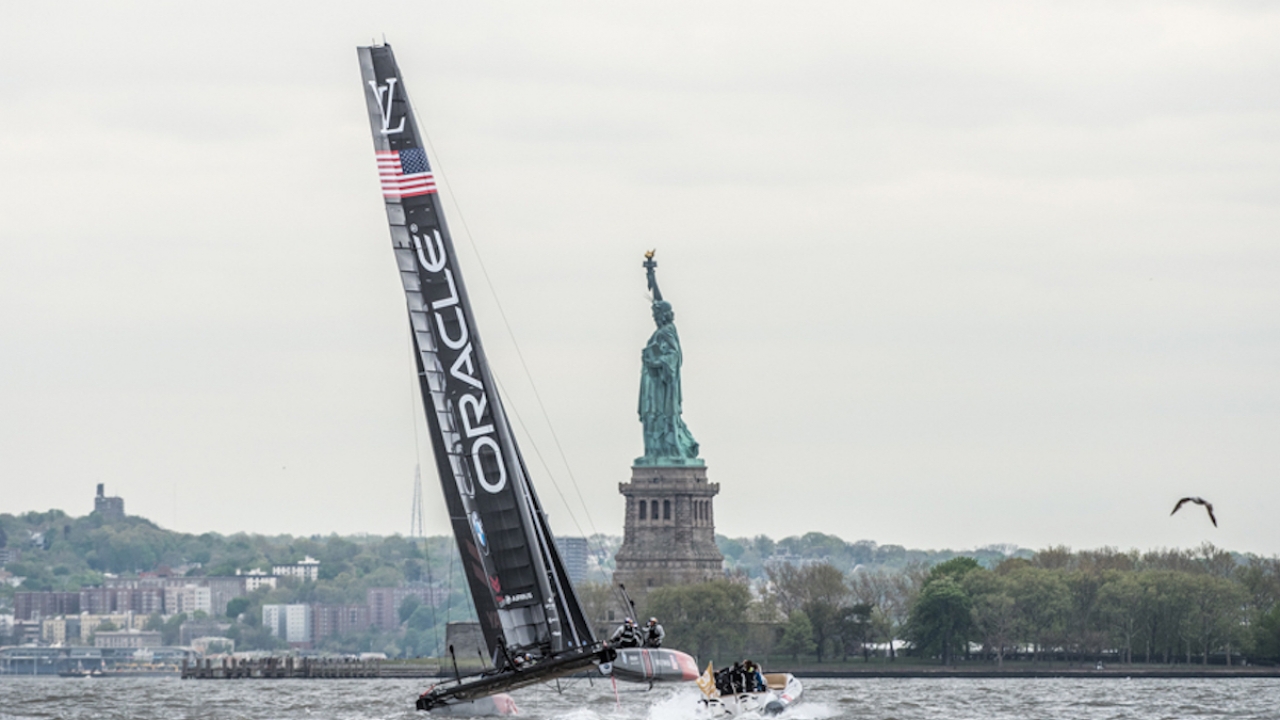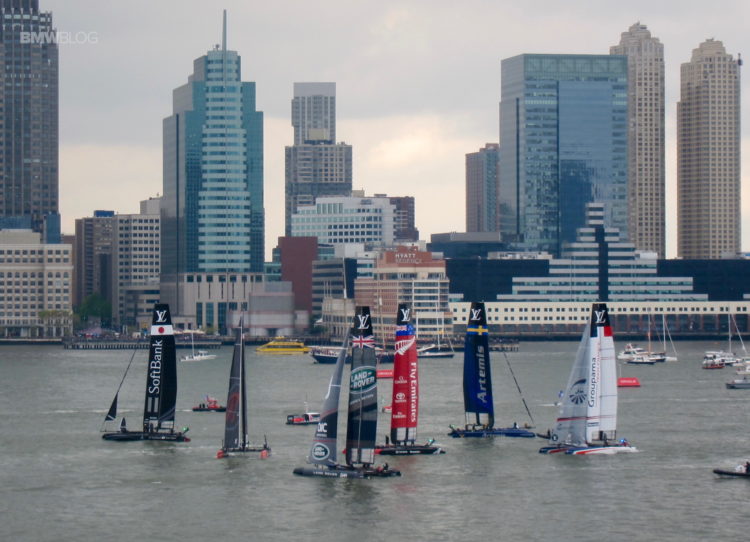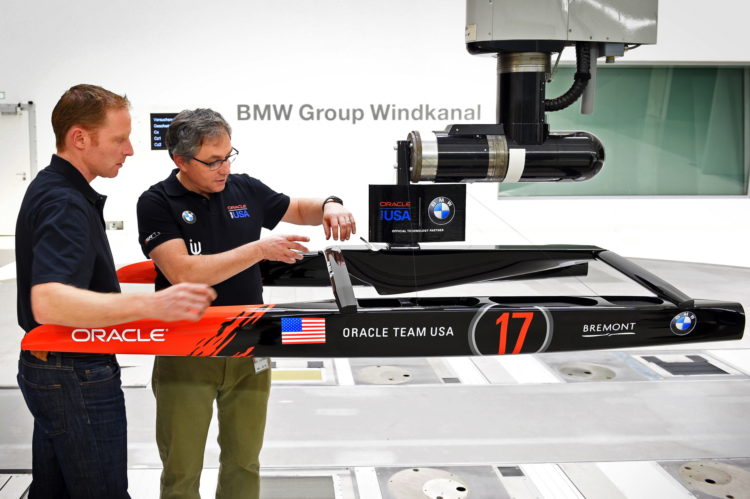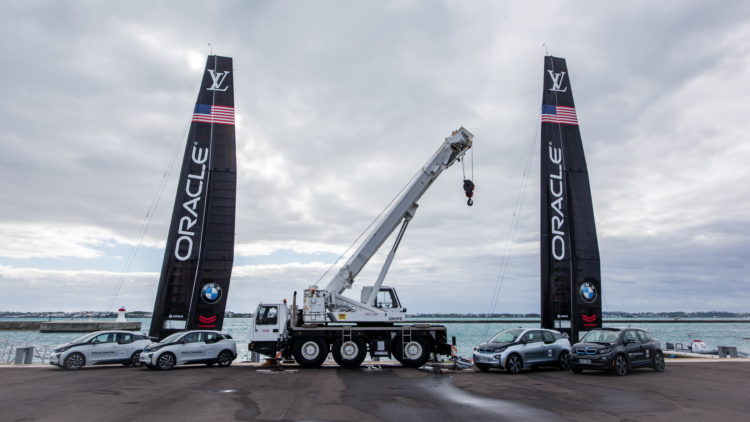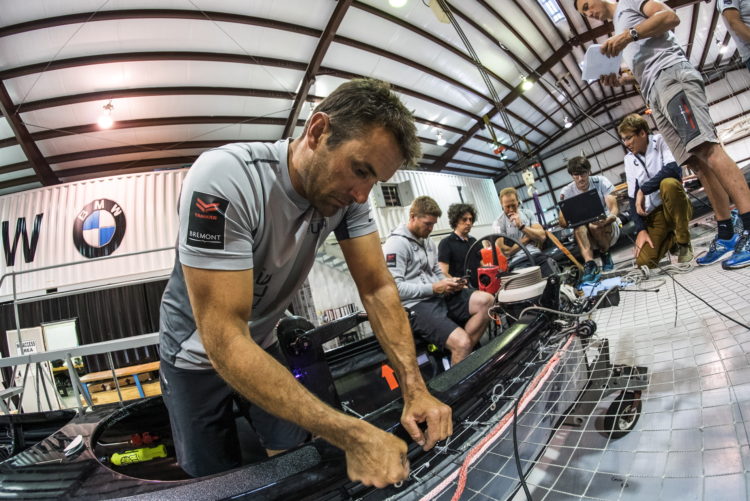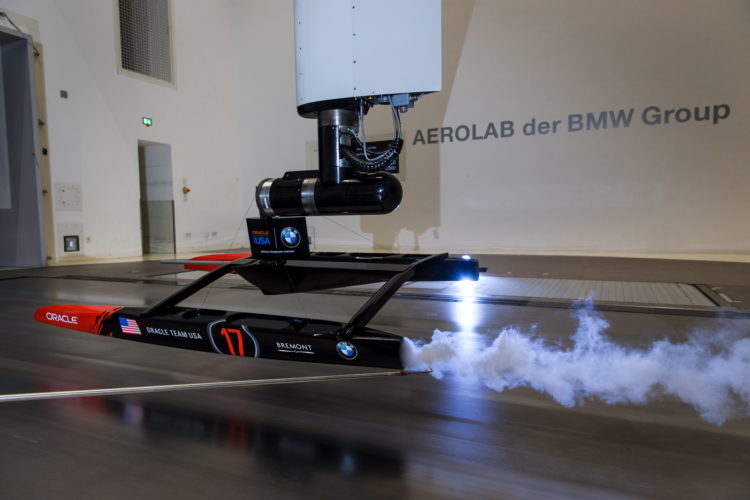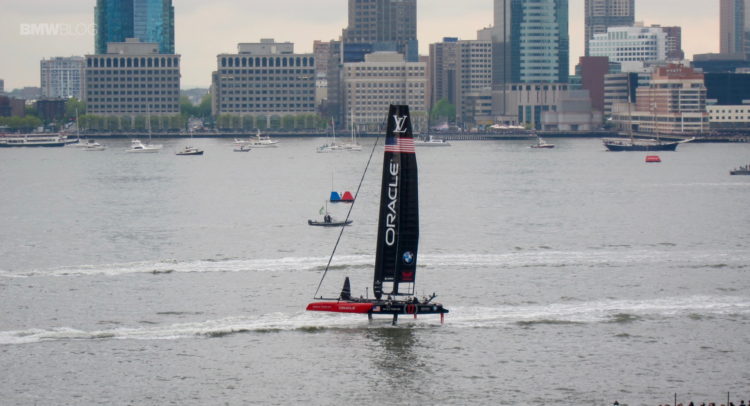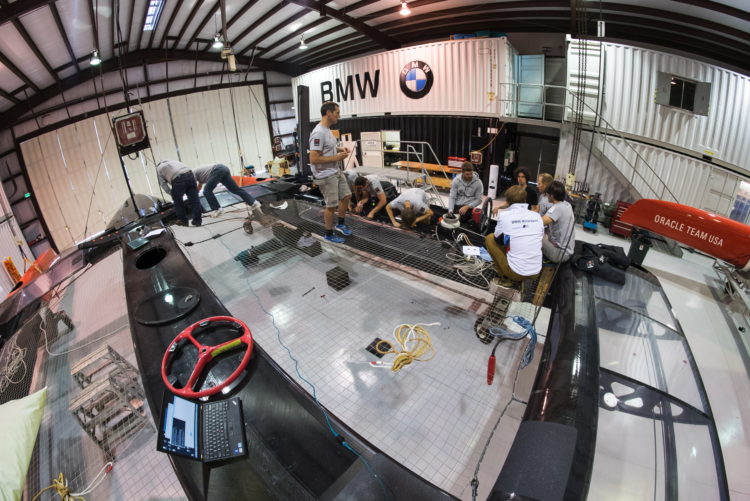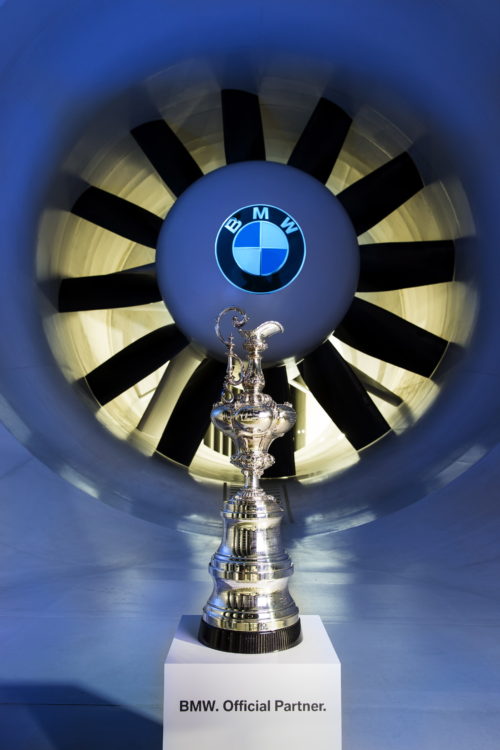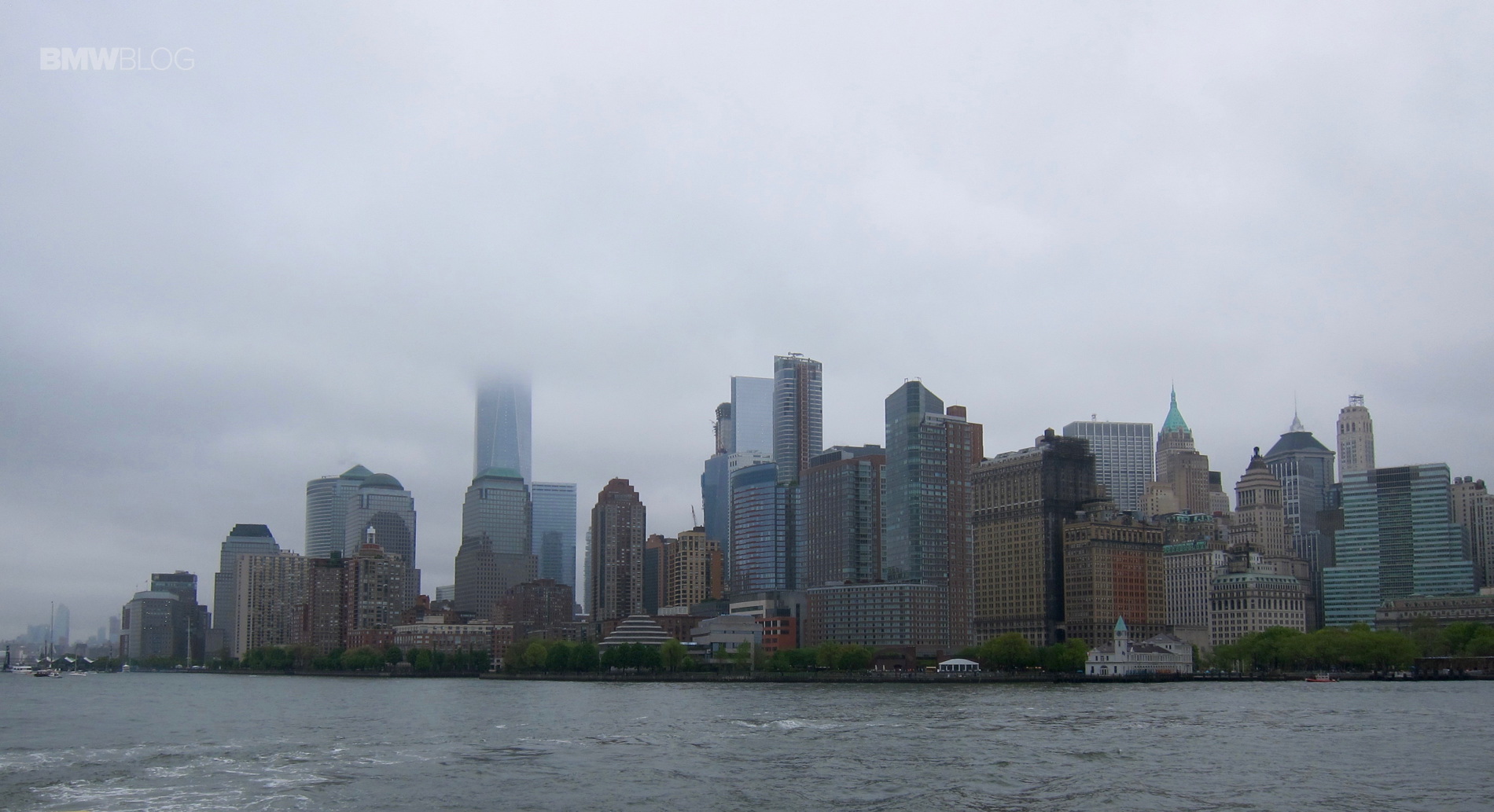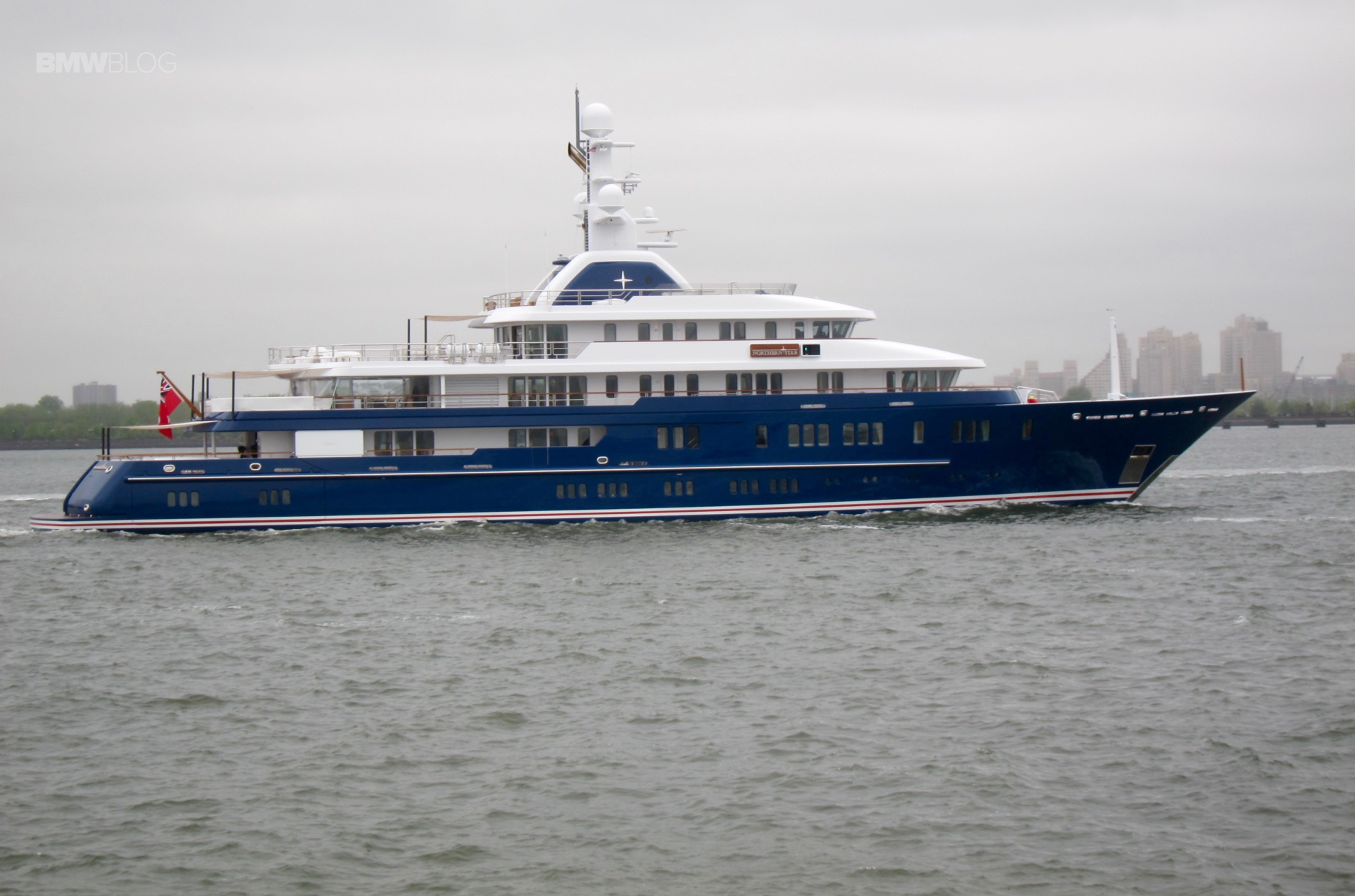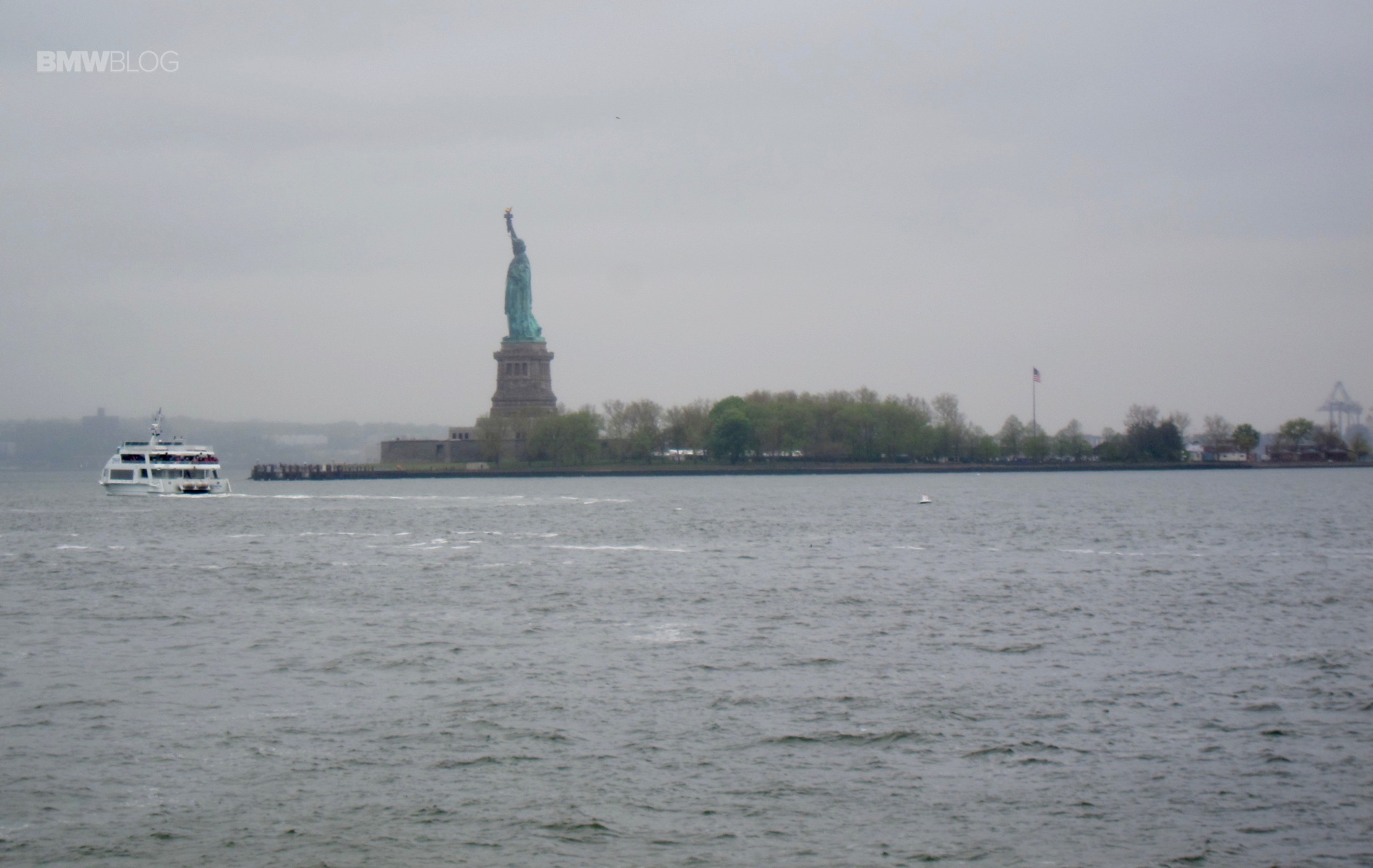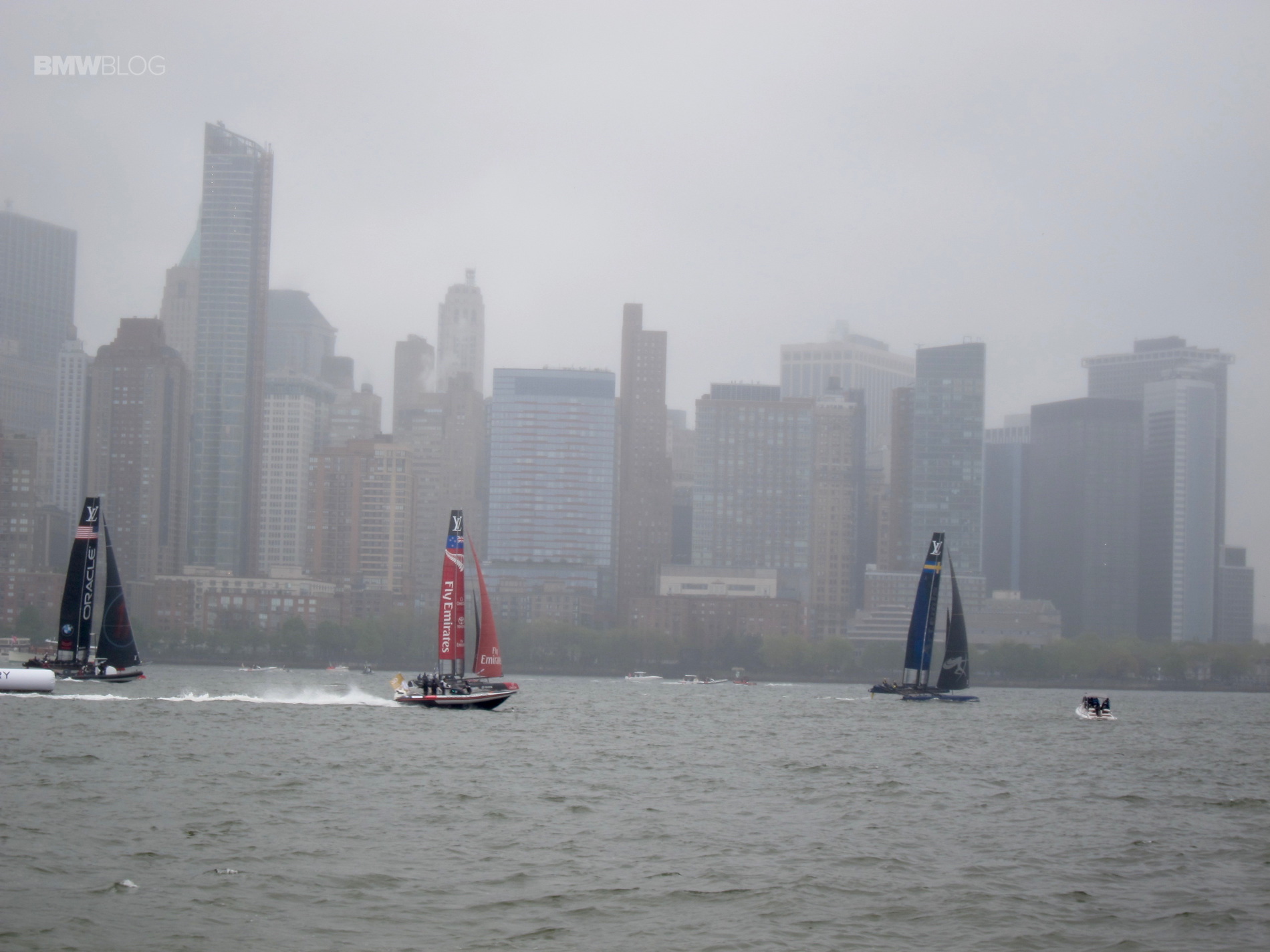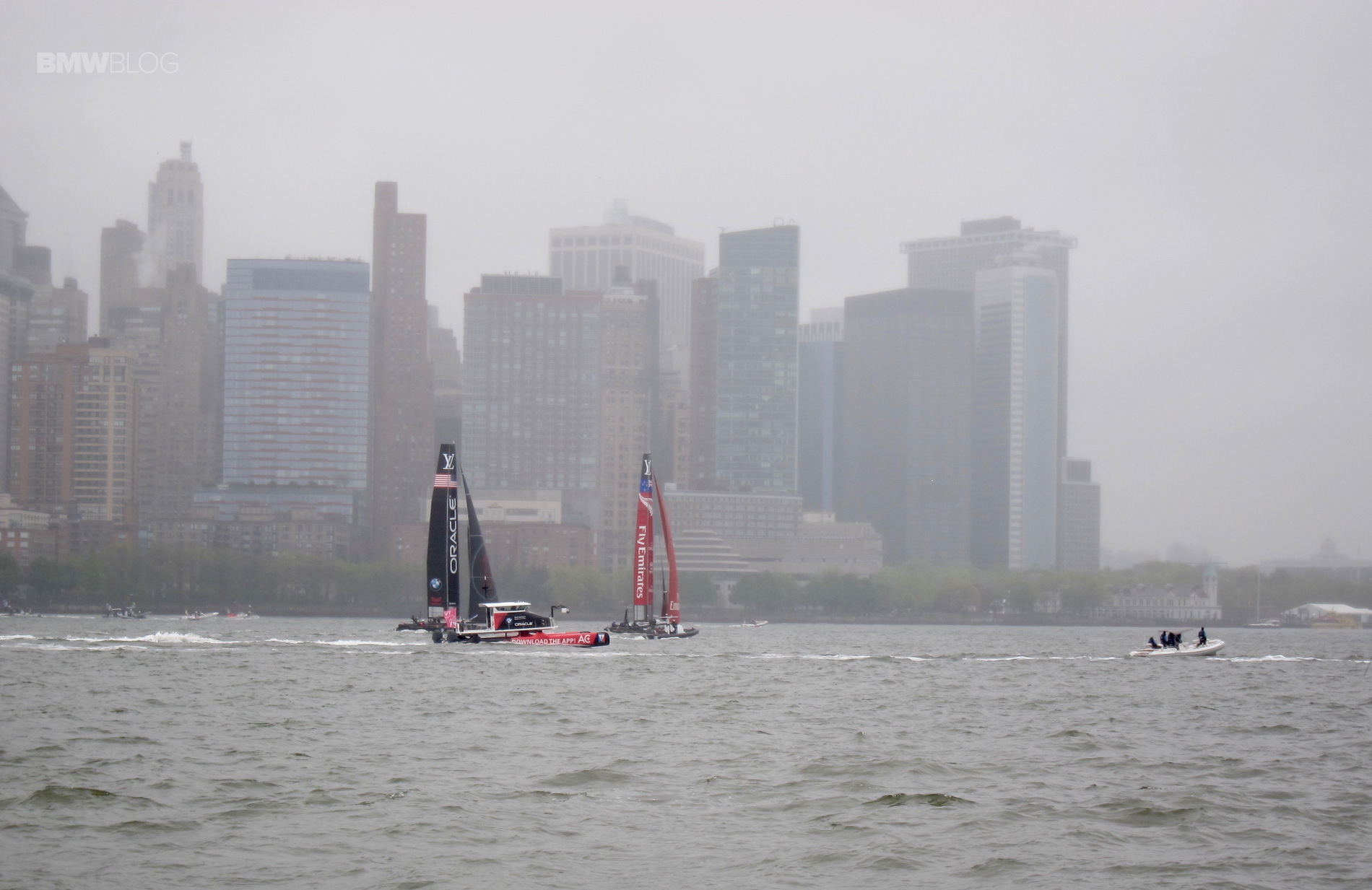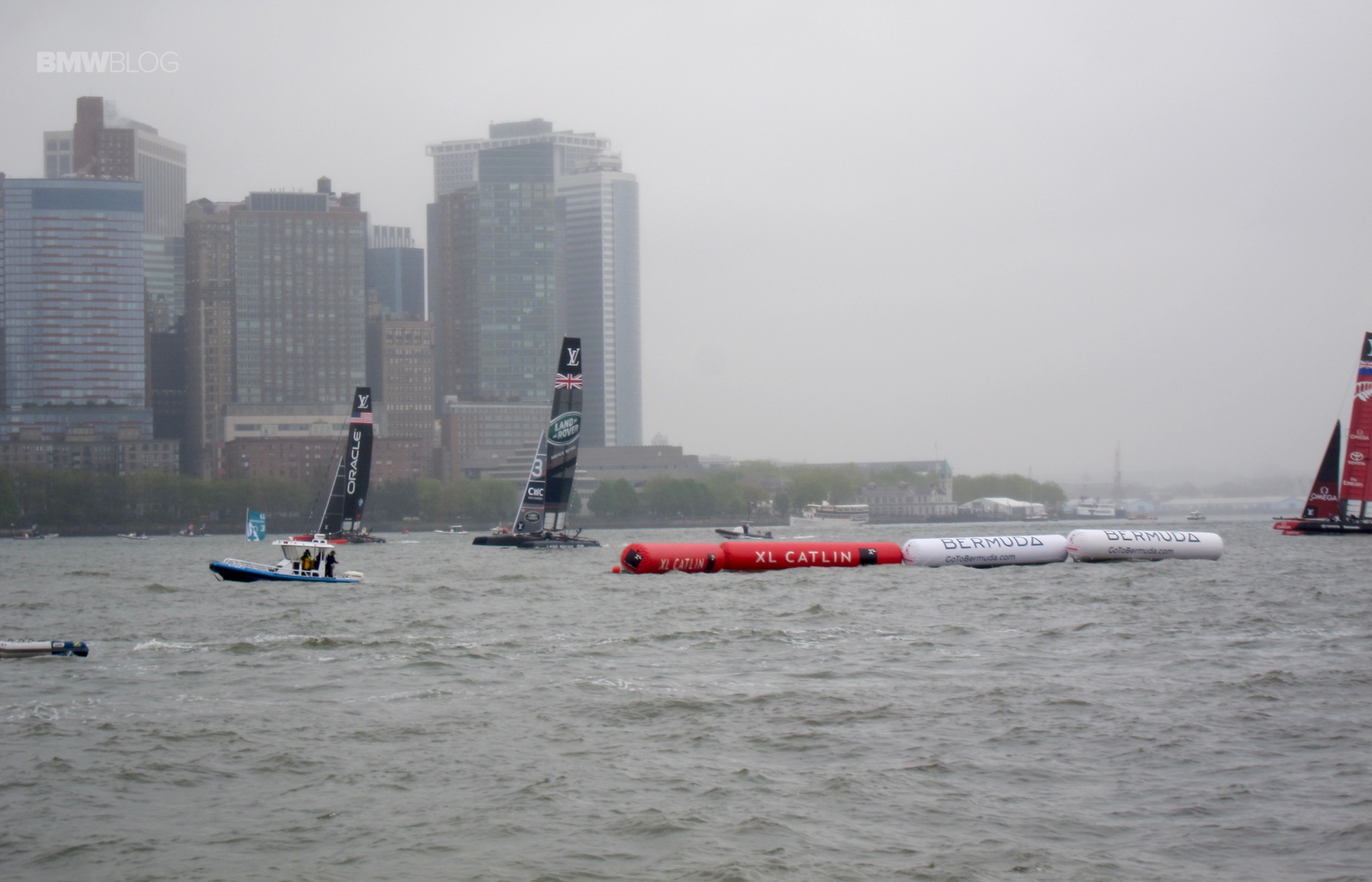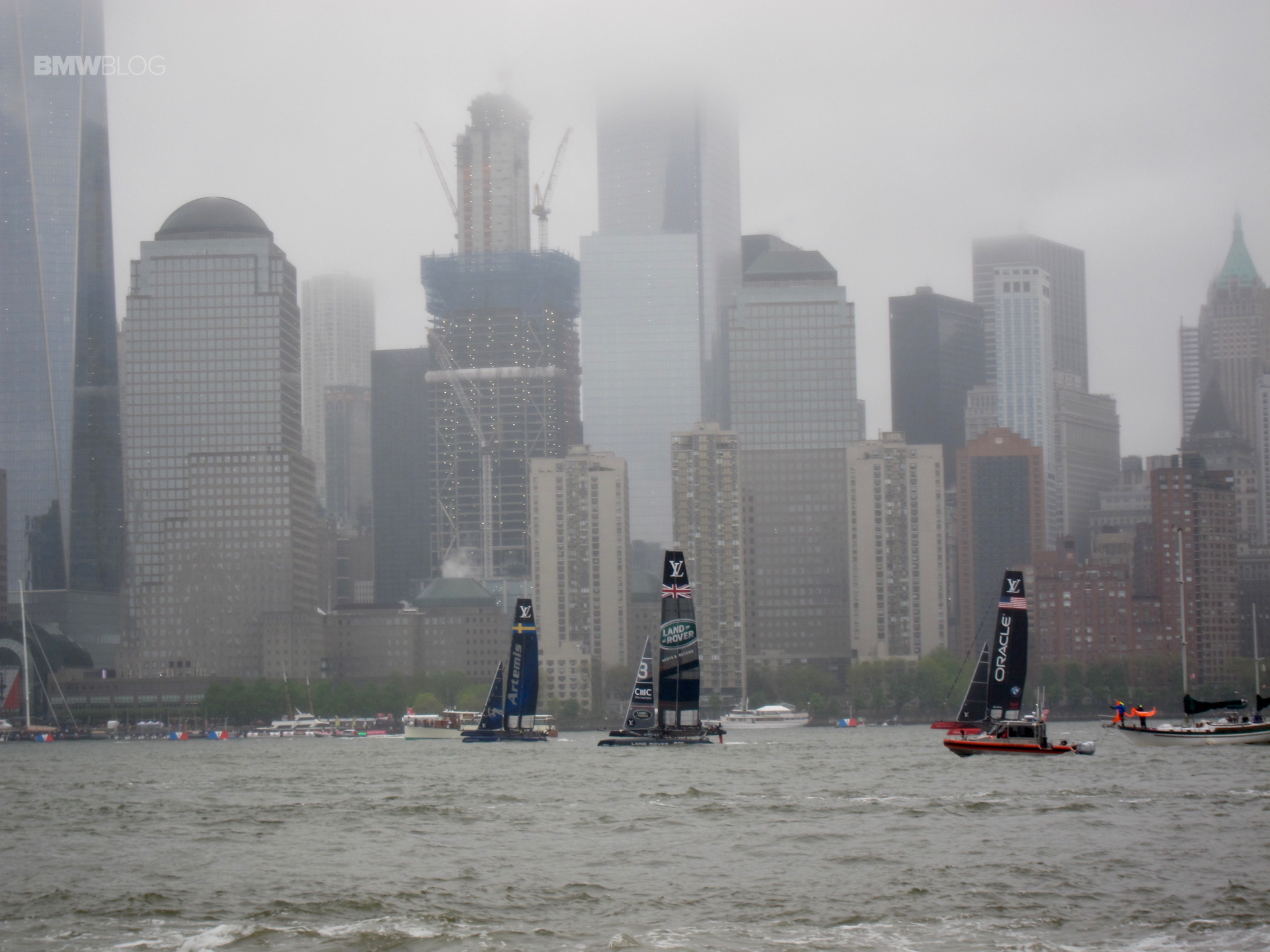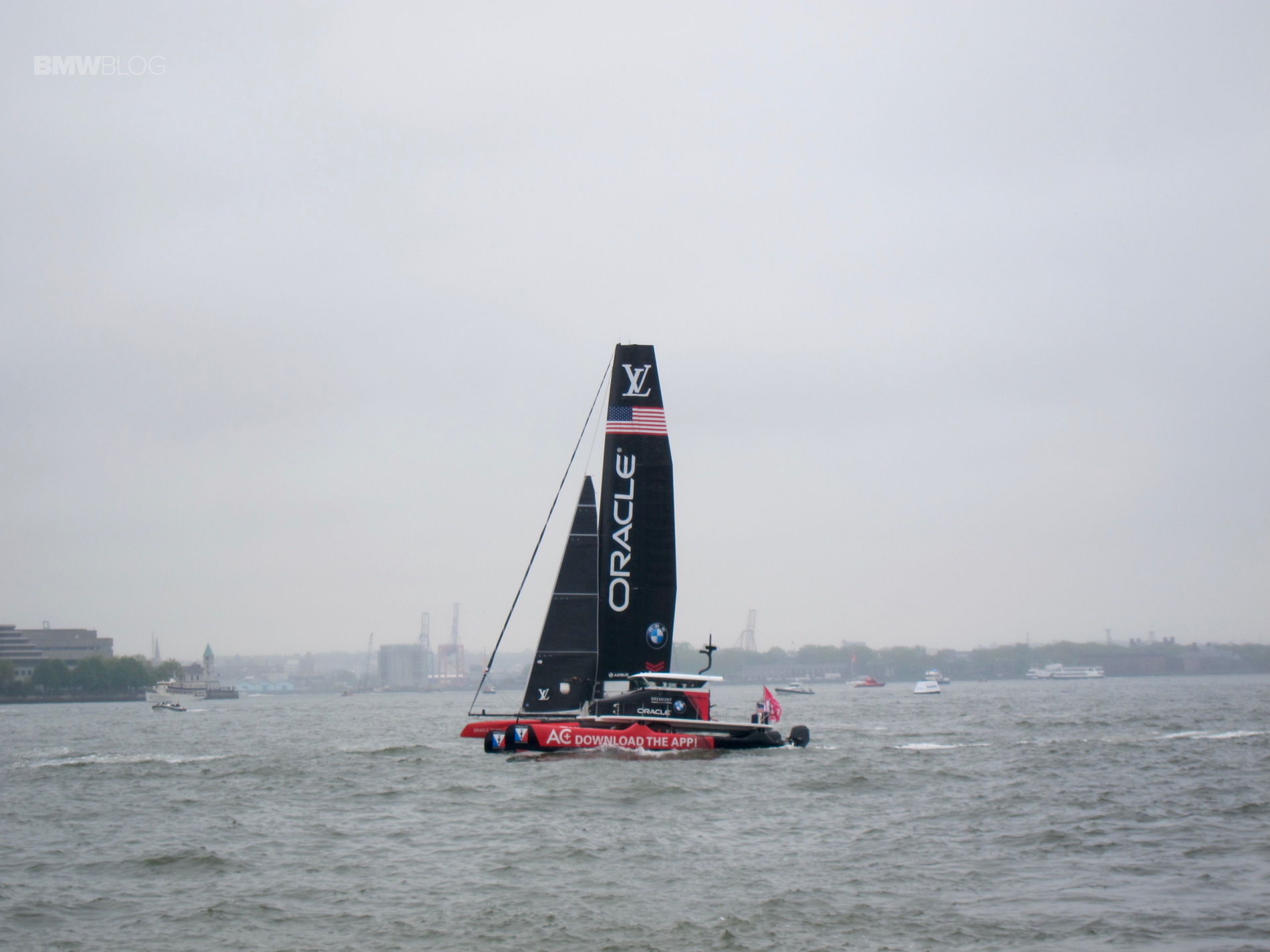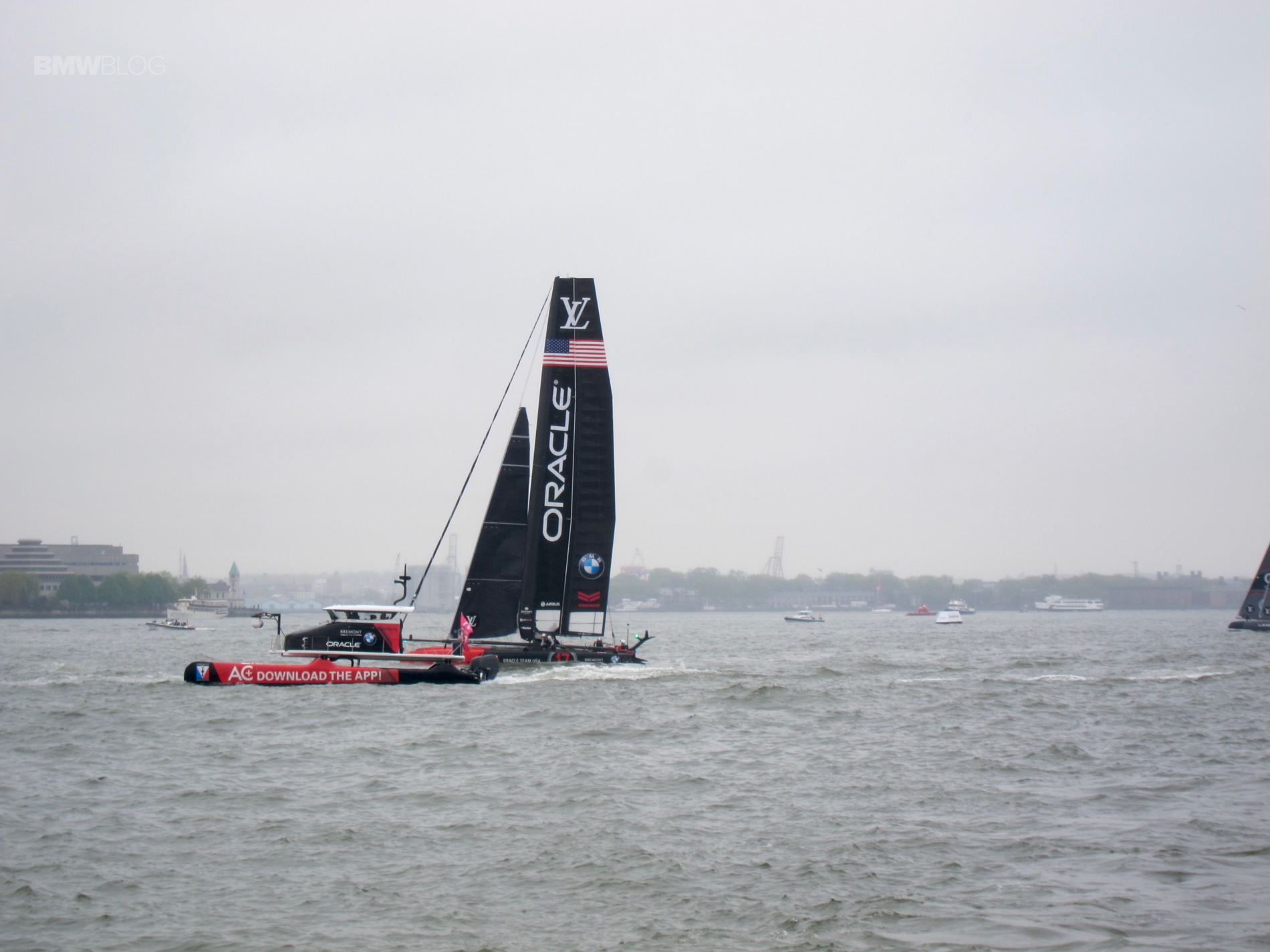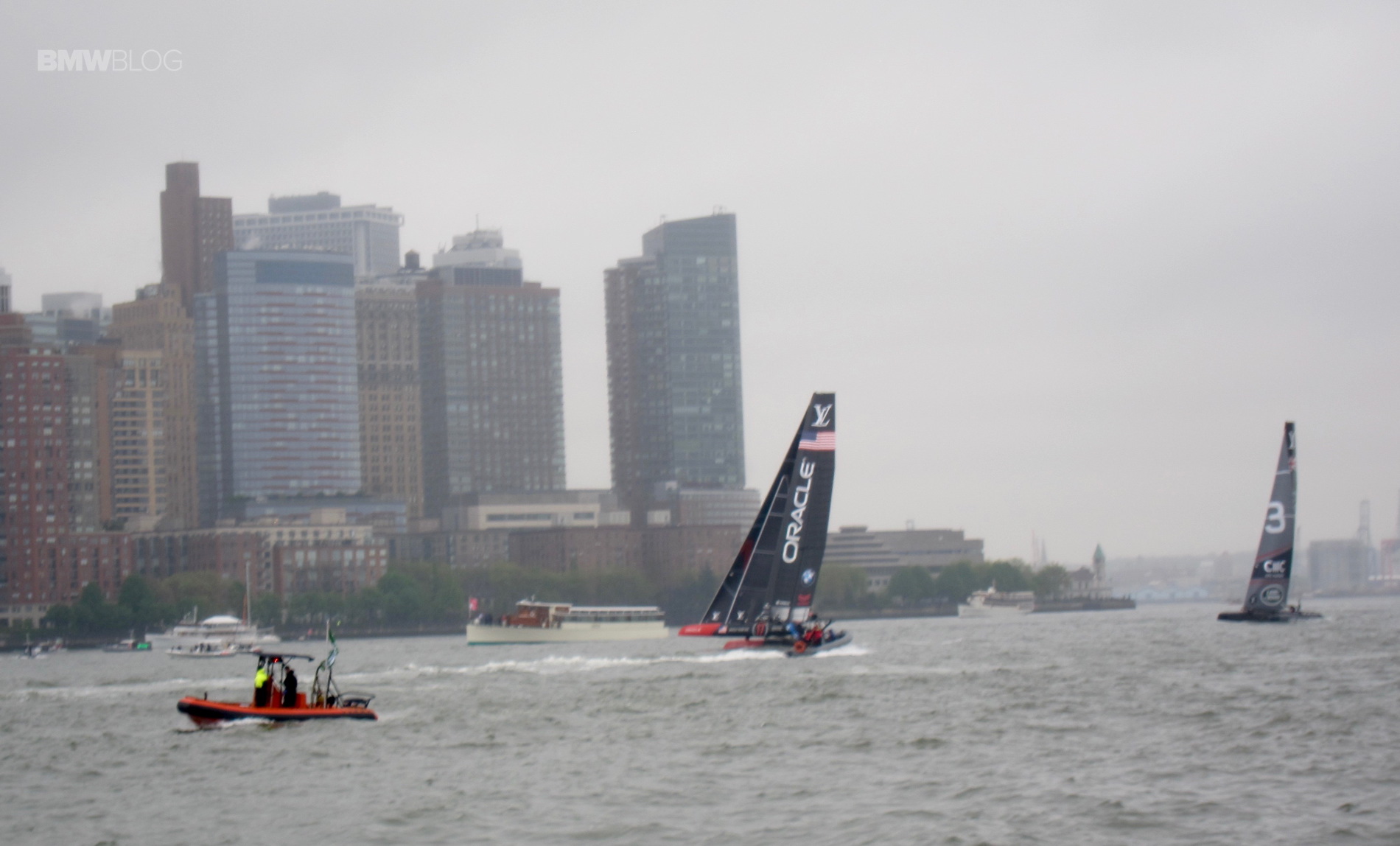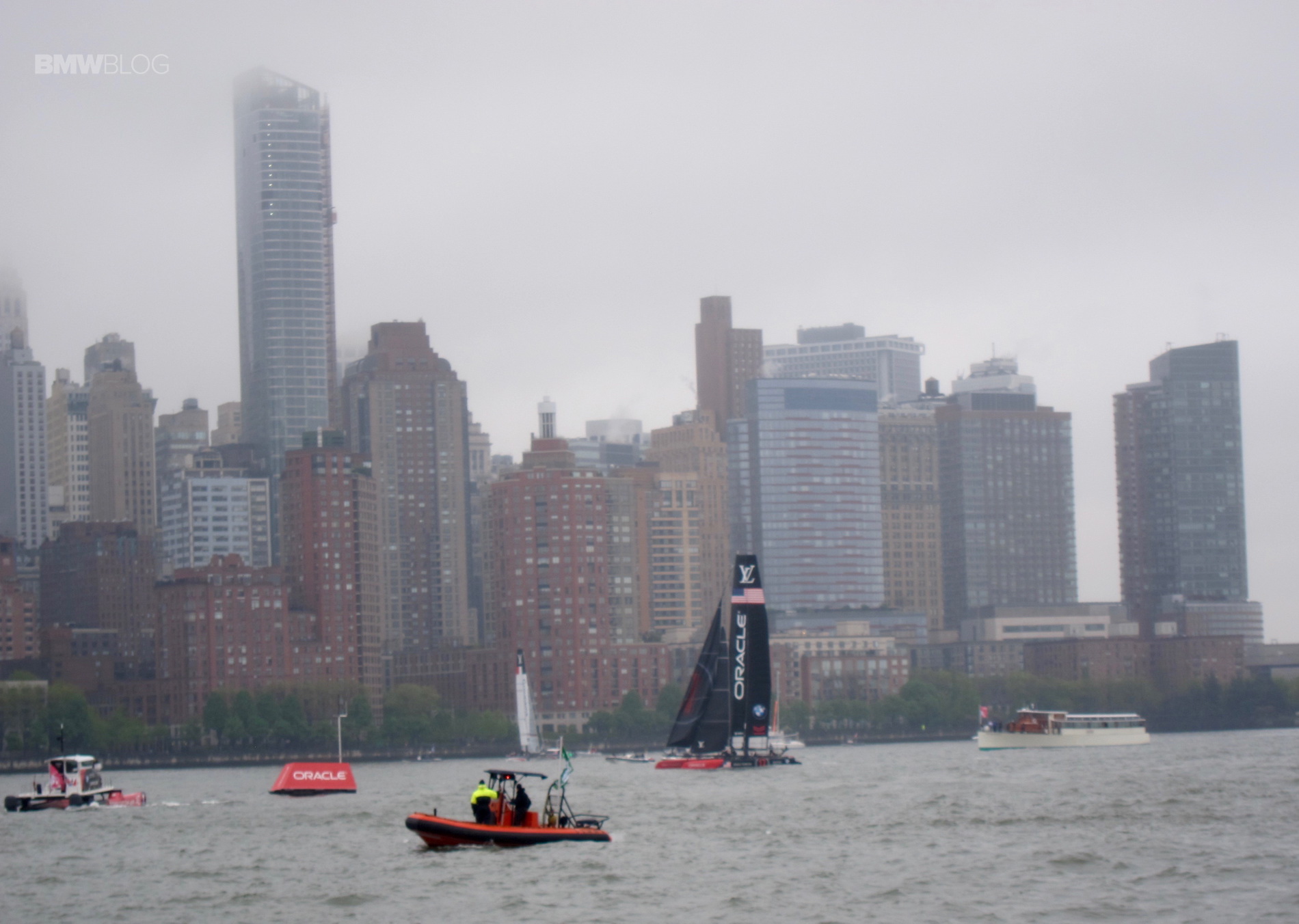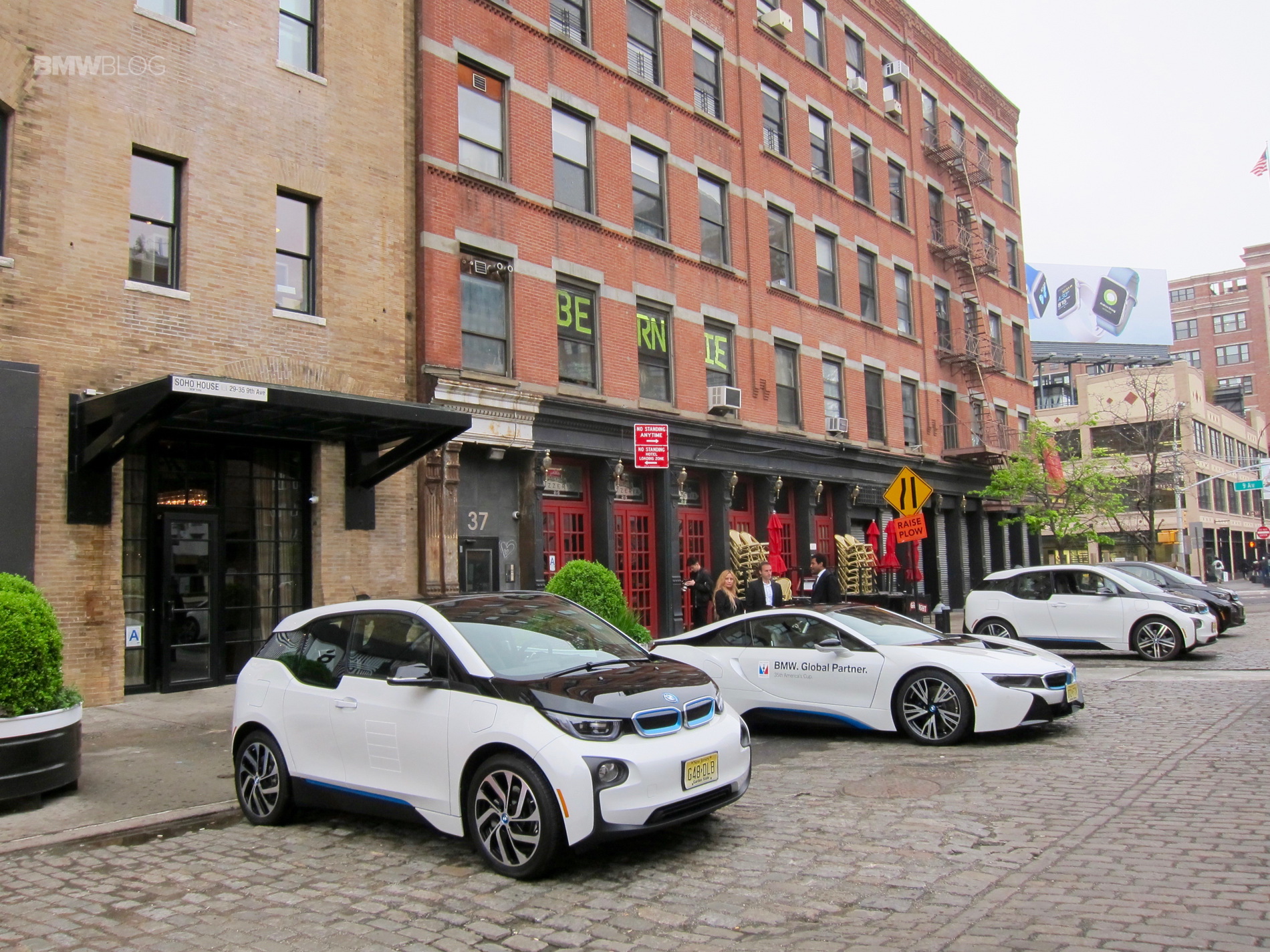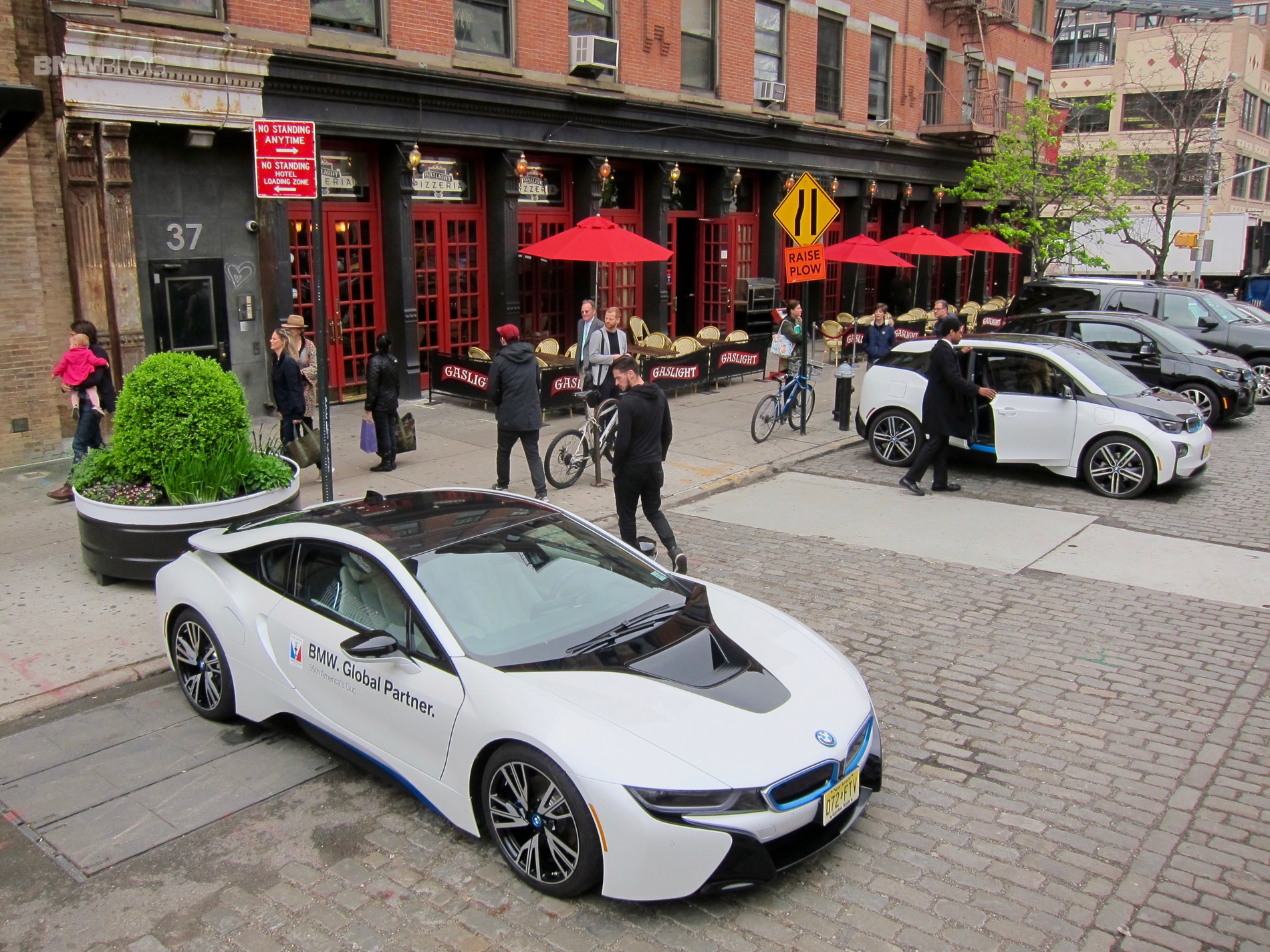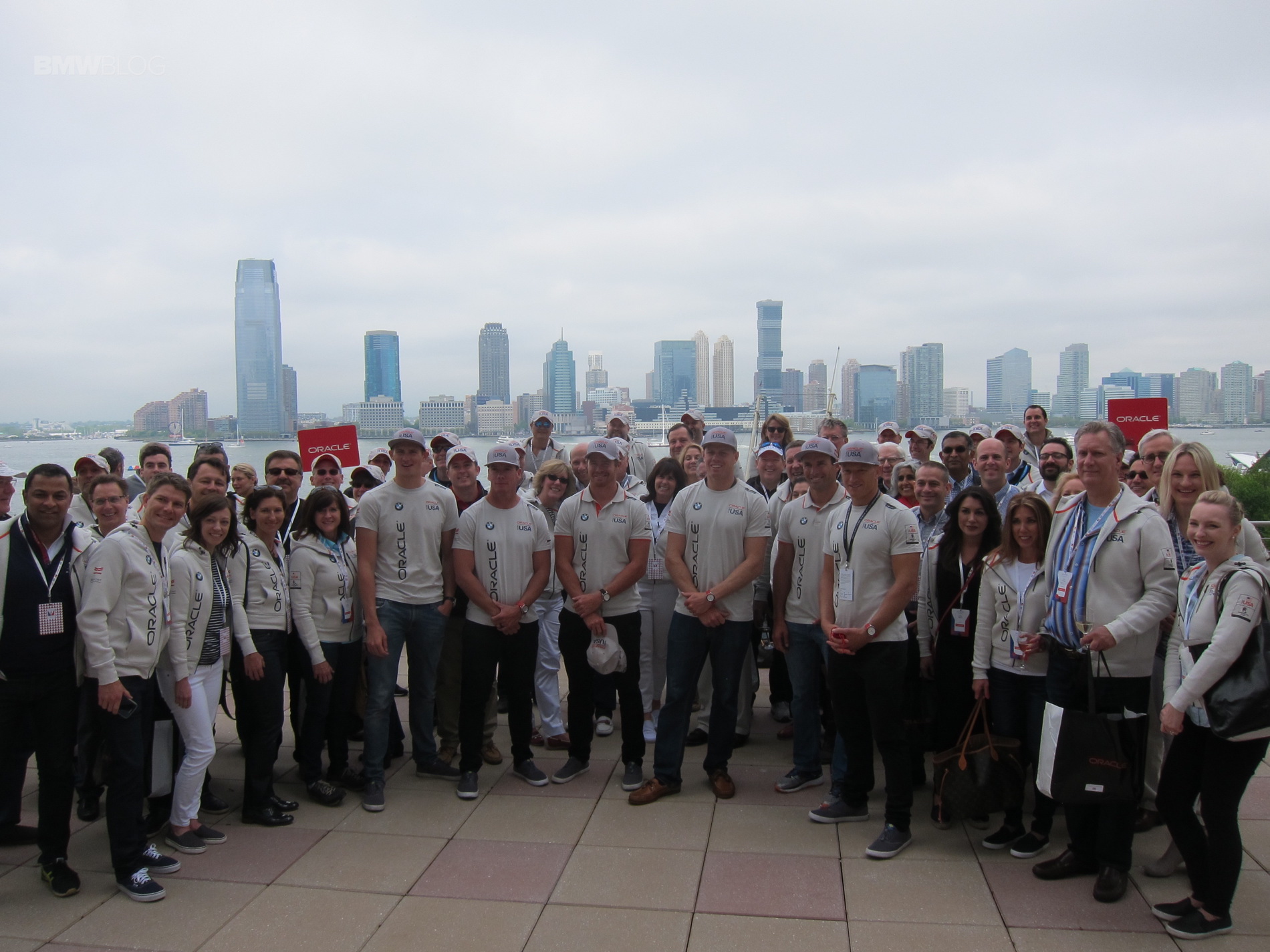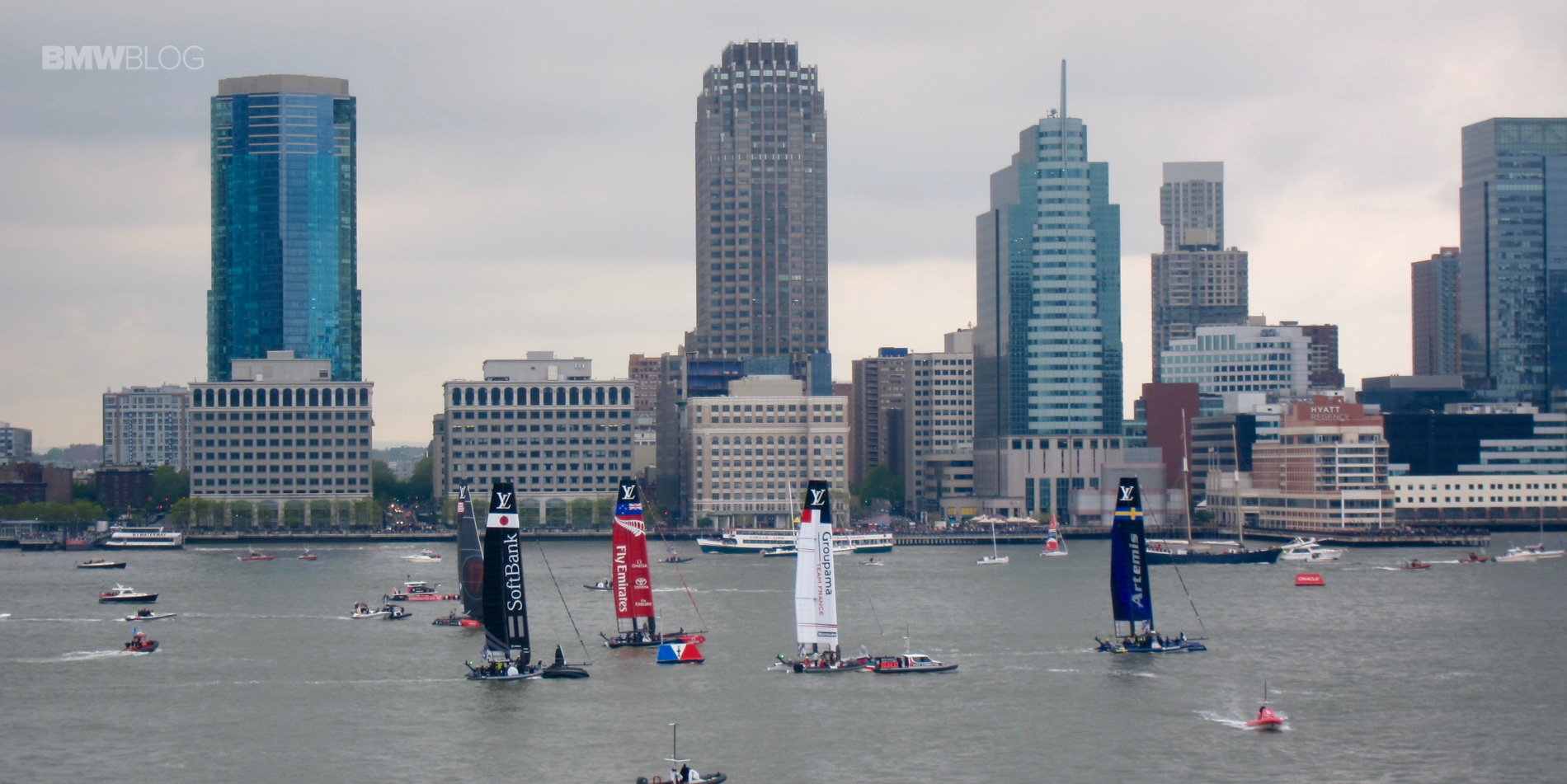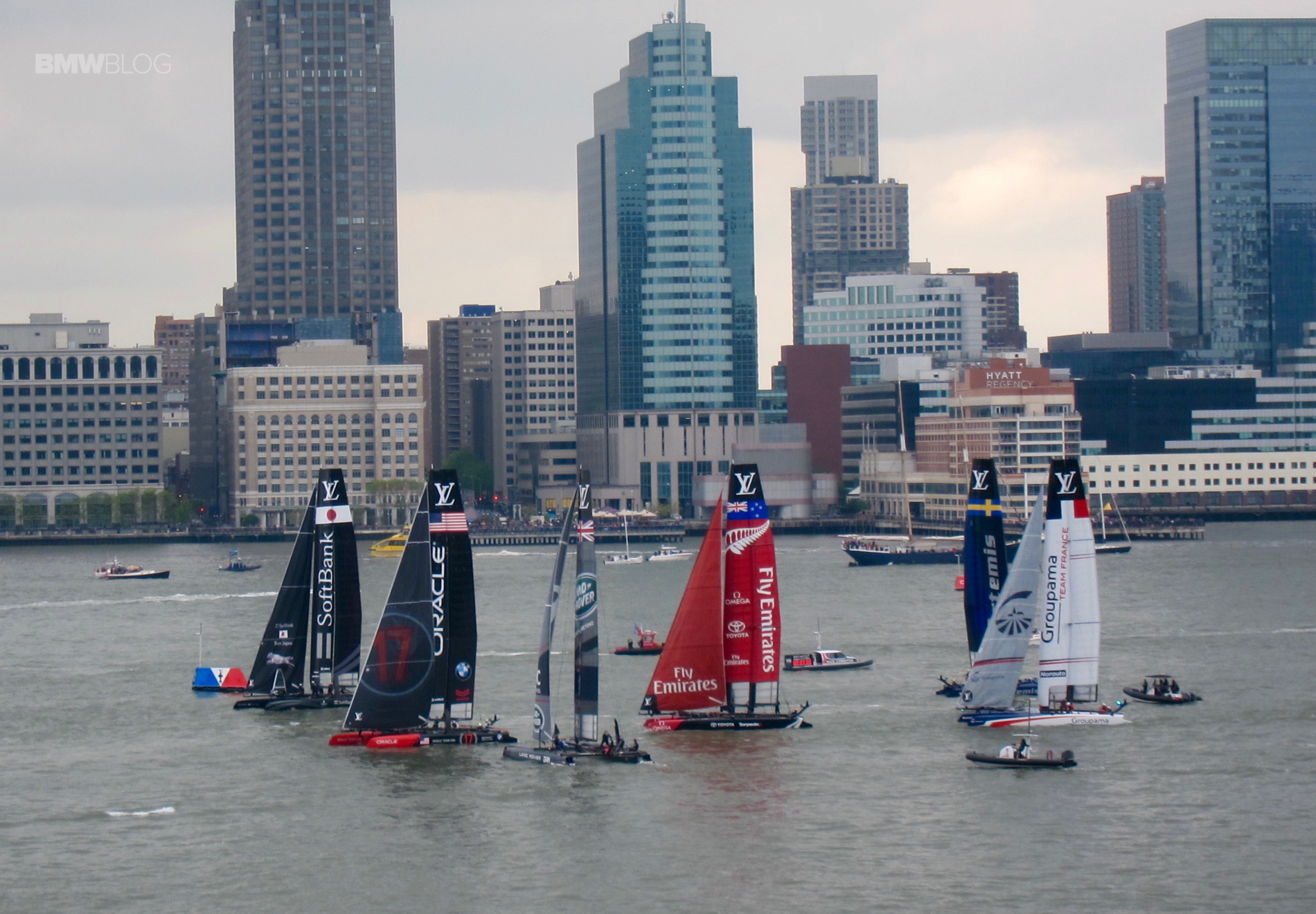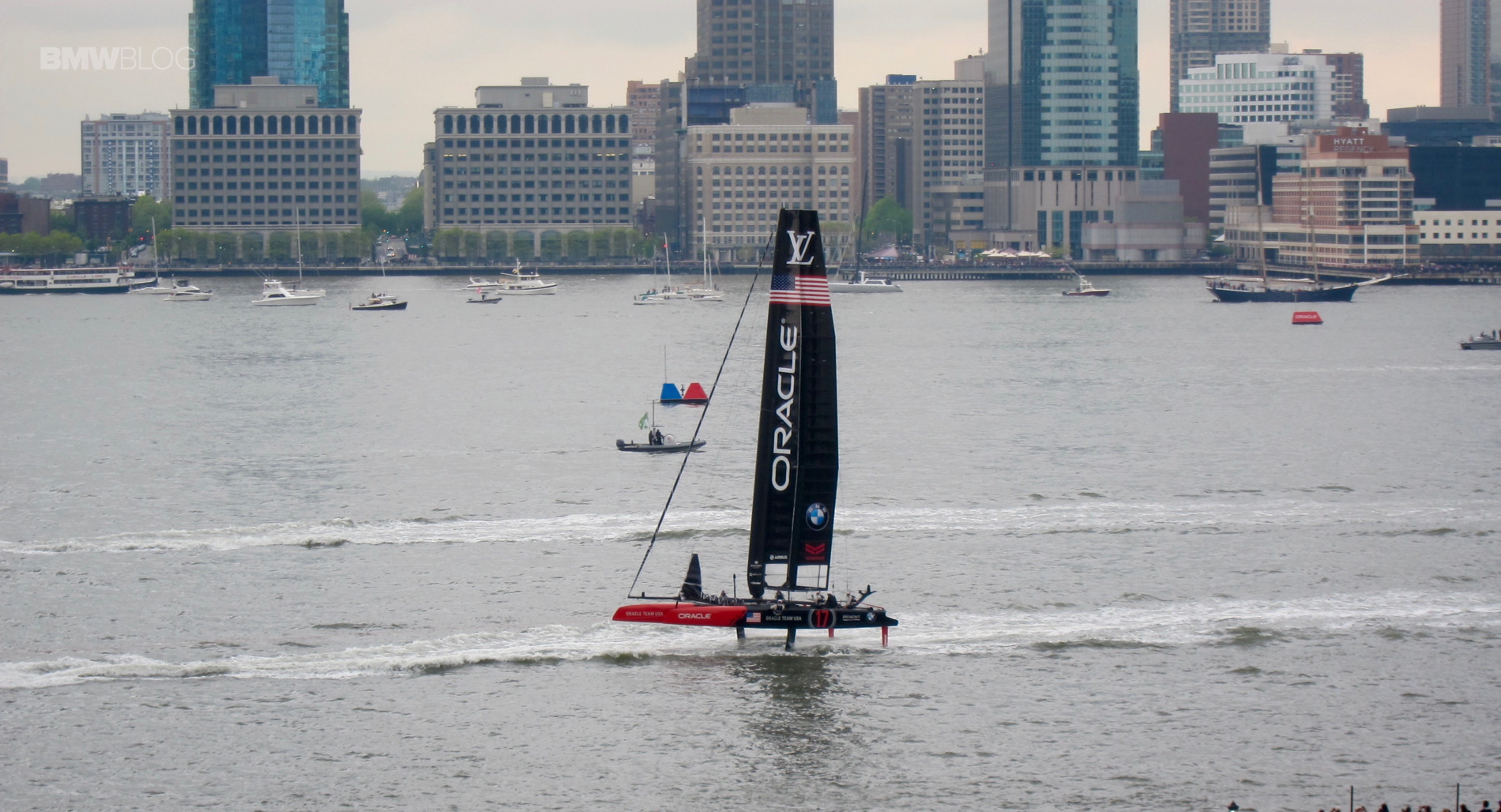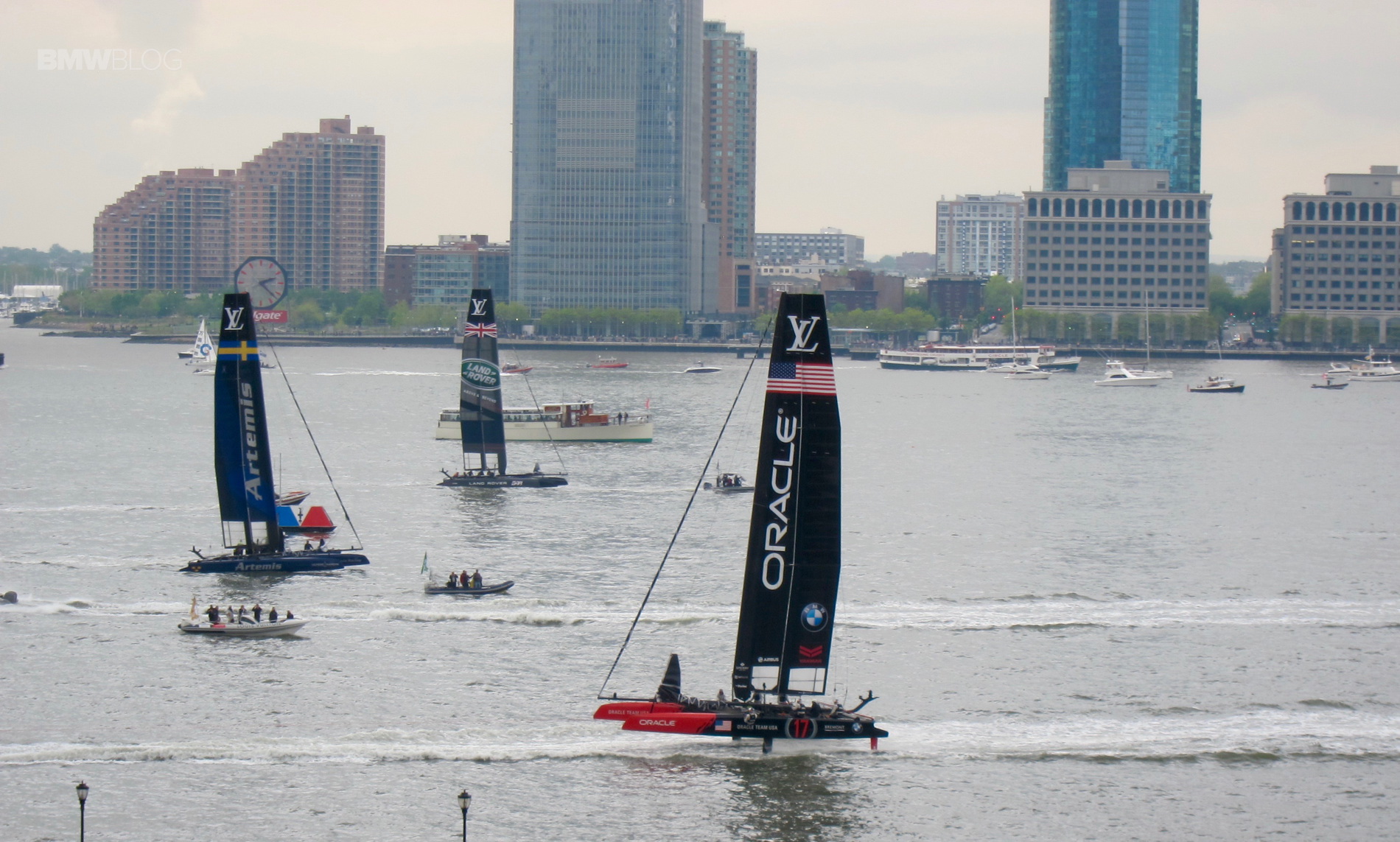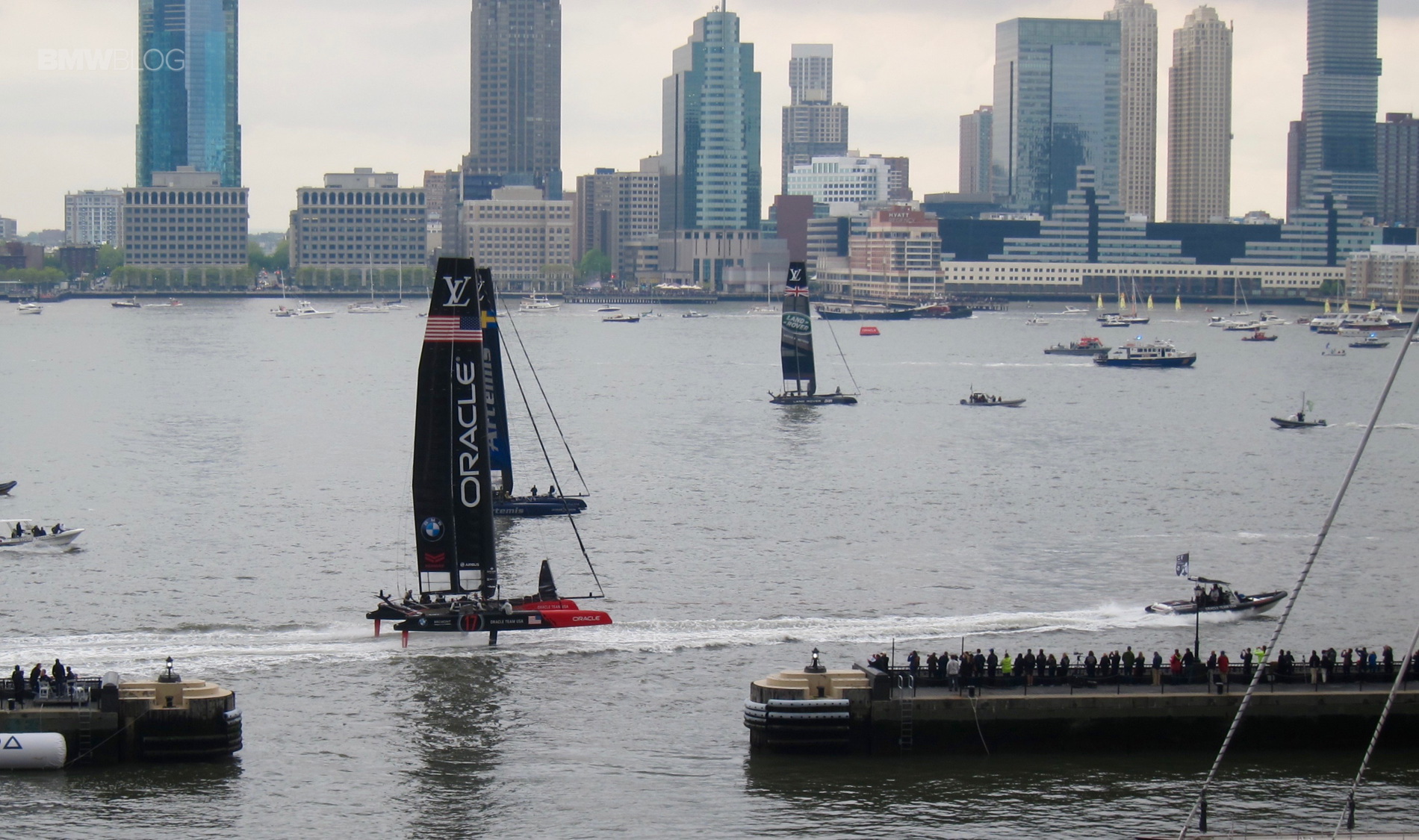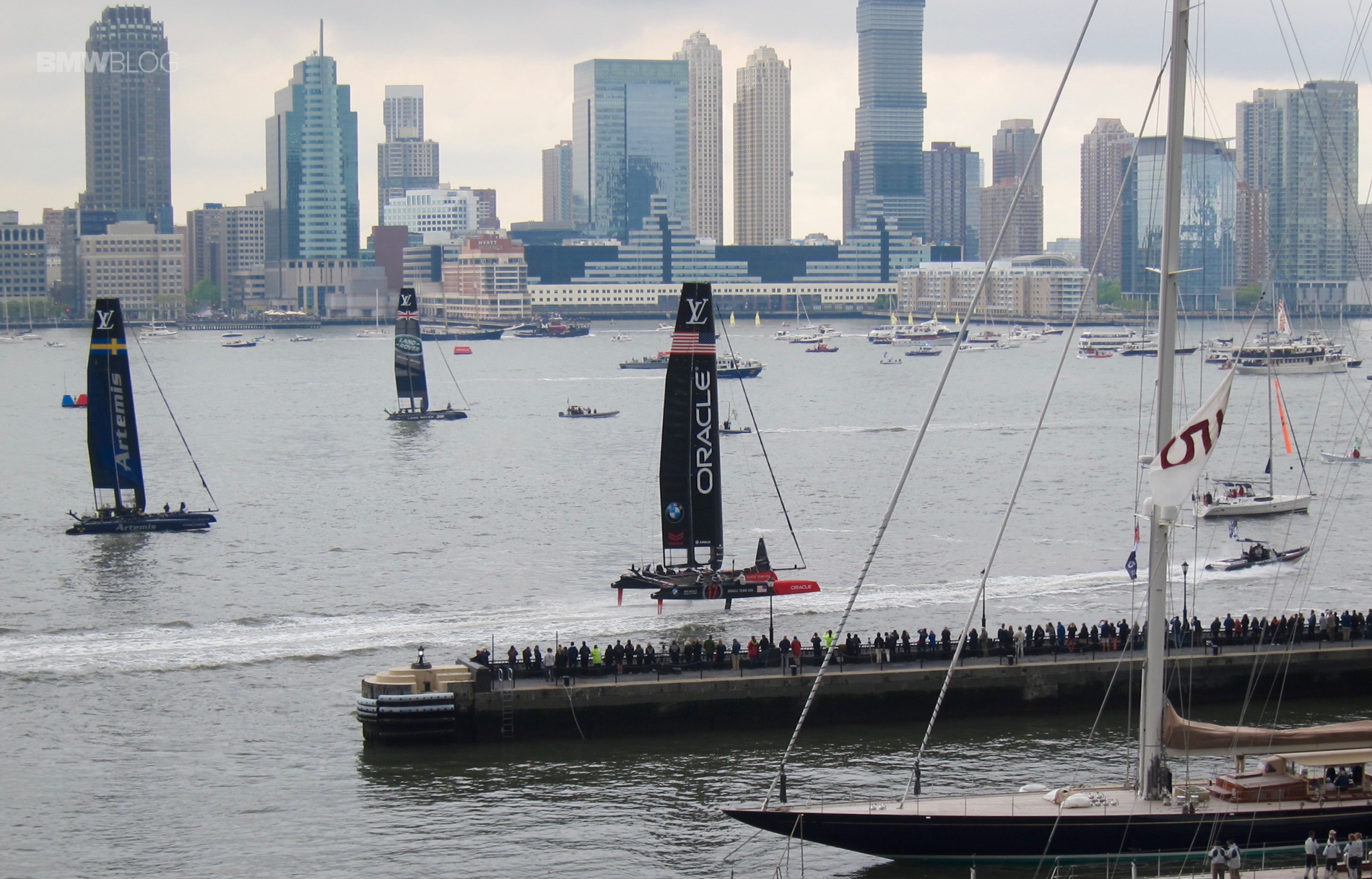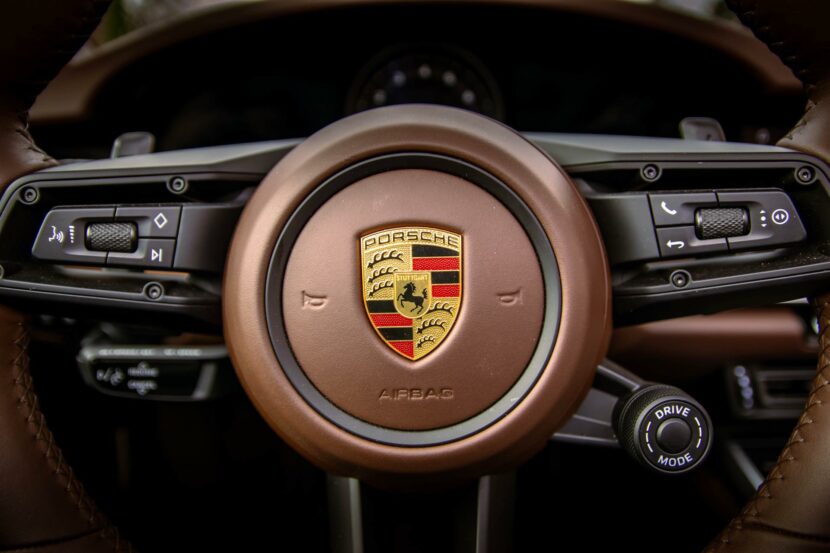On the surface, it would seem that BMW is merely a major sponsor of Oracle Team USA’s America Cup Racing Yacht. However, BMW’s relationship with the team truly runs deep. This past weekend, BMWBLOG attended the America’s Cup Race in New York City learning from the team’s designers, engineers and sailors what it takes to make these complex yachts and run Oracle’s impressive team.
Back in New York City for the first time in a staggering 96 years, America’s Cup Racing took place on the Hudson River between One World Trade Center heading down towards the Statue of Liberty. The location made for fantastic spectator viewing with the iconic New York City Skyline as a backdrop on one side and New Jersey on the other.
As there were two days worth of boat racing, and one of practice races, we were able to spectate the races from the shore and as well as on a boat on the Hudson River. Given how close these races are to the shore now, there really isn’t a bad place to watch the current America’s Cup race. The best place to take in the race is the America’s Cup Village because you could see the whole course.
Synergy between BMW and Oracle Team USA
When it comes down to cutting edge sailing race, the most efficient team wins. As BMW’s new motto is EfficientDynamics, BMW and Oracle Team USA make a natural fit. BMW brings significant engineering and testing capabilities to the team and the company even assigns certain engineers to the team for the entire competition. BMW is further able to help with experimental and computational tools that provide massive computer power for virtual test benches which help evaluate a design even before it’s built.
BMW’s expertise manufacturing automobiles translates directly into Oracle Team USA via process and optimization for development in the team’s AC45F Yacht. Even small thing in the boat – such as ceramic bearings in the winches – can make a huge impact. Oracle being able to tap BMW for access to the tried and tested components speeds development. The racing yachts yield 40,000 data points per second so races and practices can be analyzed.
Sailing to Flying
Perhaps the biggest change over the last ten years of America’s Cup Yachts is that the current boats “fly” or foil. At speeds around 17- 20 knots, the twin hull catamaran comes up out of the water on carbon fiber foils. These new boats can reach speeds of a staggering 50 knots, yet can turn and stop on a dime. As these boats get faster and faster, proven design technology becomes more important.
Over the past 10 years, technological advances and design changes in America’s Cup yachts have netted a three fold increase in top speed. The down side to a three fold increase in top speed is a nine-fold increase in drag. In the last four years alone, 30 knot gains in top speed have been realized as boats have gotten lighter and shorter. Thus sleek lightweight designs that have been honed aerodynamically become more and more important.
Over the past 10 years, boat weight for the America’s Cup has decreased from 52,800 lbs all the way down to 5,280 lbs. The America’s Cup Yachts now use a giant carbon fiber wing, the same style of one used on planes as the main power generator for the yacht. BMW’s massive aerodynamic testing facility with the ability to create wind speeds of 180+ mph in Munich is used by Oracle Team USA to look for areas to refine aerodynamics.
Control Systems
Now that America’s Cup Yacht’s are capable of “flying,” they need a steering system that is ergonomic enough to use in a pitching boat, but also has the ability to control the boat in up/down “flying” maneuvers. The same BMW engineers that design the DTM race car steering wheels developed Team Oracle’s lightweight, intuitive steering wheel that allows rapid trimming of the fling boat not just the left right control of the rudder. Team Oracle is able to actually use automated control systems taken directly from BMW’s automotive application to their racing boats. Input to reaction times from when turn wheel until the boat moves used to be two seconds and it’s now nearly instantaneous – thanks to these automotive sourced systems.
The Athletes
Over the years – in addition to the changes in the yachts – the crews have changed dramatically too. Crews are getting younger and younger as there is more emphasis on being more aerobically fit in addition to strength. The races are short and very intense. During training, the crews have the heart rate monitored and most of the sailors heart rates are 150-160 beats per minute for the whole 20-25 minute race. Incredibly fit athletes, Brinksmanship, teamwork and tough calls that can make or break the race all add up to exhilarating yacht racing.
Technology transfer from Oracle Team USA to BMW
Racing carbon fiber yachts gave BMW direct access to design, production and testing of carbon fiber before BMW moved it into production cars. Thomas Hahn, part of the Oracle Team USA Design Team told us that BMW used some of the exact techniques that had been developed in Team Oracle’s yacht racing to help the i3 electric car achieve a more rigid roof structure.
Initial BMW designs before manufacturing showed the i3 might fail the roof crush resistance test. The i3 needed more structural support. Team Oracle’s experience and techniques were then directly translated into new carbon fiber braiding and weave technique resulted in such structural rigidity that BMW is able to place three i3s on to of each other.
BMW and Oracle Team USA teaming up for the America’s Cup has turned out to be a been a partnership where both have benefited. This is no mere sponsorship in one of the most important and historic trophies in sports. BMW has a fantastic test bed to be able to test and tune EfficientDynamics technologies and help Team Oracle chase valuable seconds which can help Oracle Team USA defend the America’s Cup.


